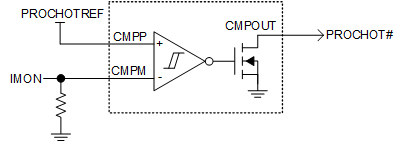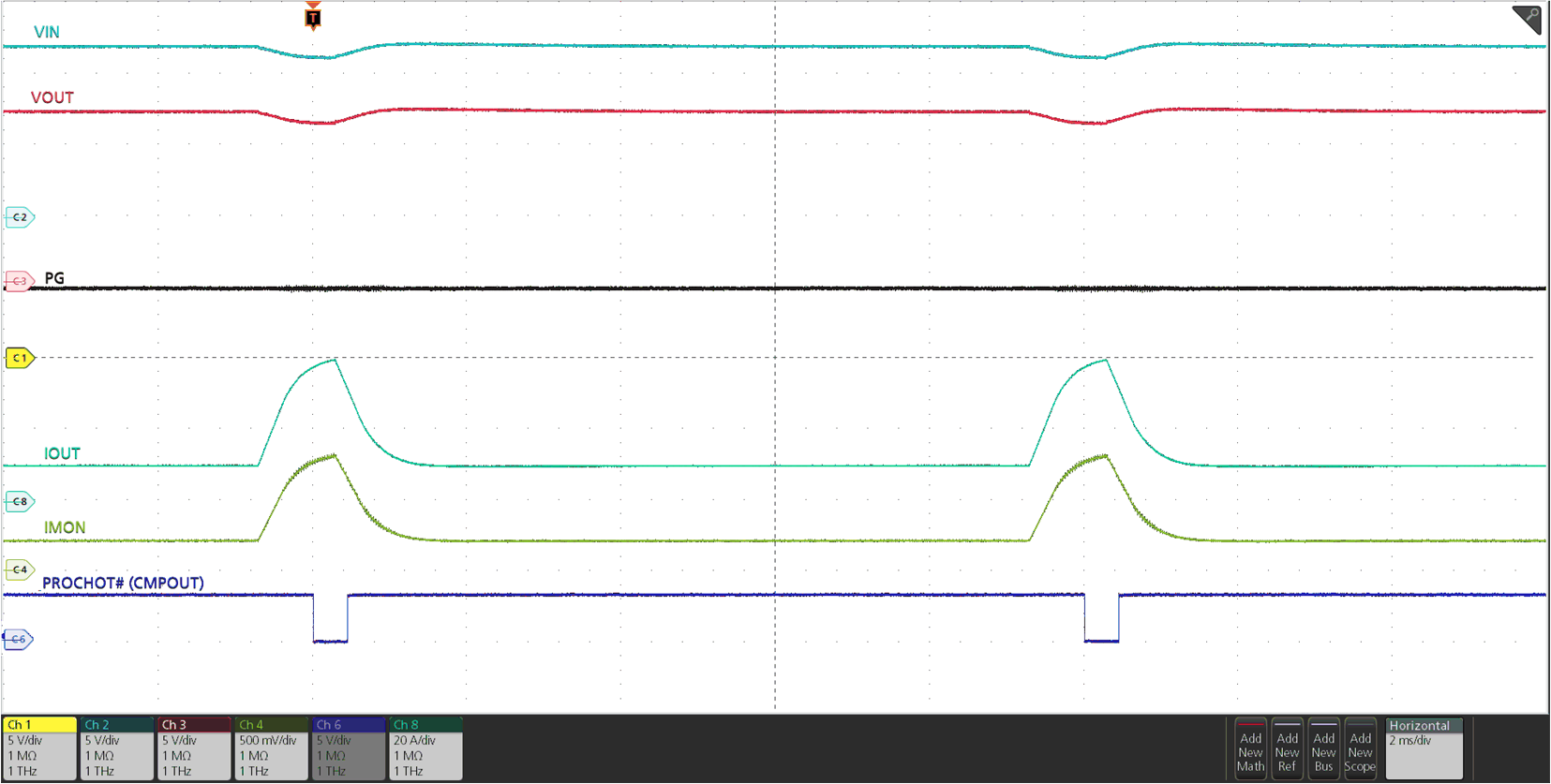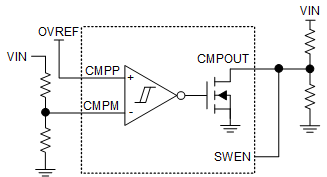ZHCSOF5A May 2022 – September 2022 TPS25985
PRODUCTION DATA
- 1 特性
- 2 应用
- 3 说明
- 4 Revision History
- 5 说明(续)
- 6 Pin Configuration and Functions
- 7 Specifications
-
8 Detailed Description
- 8.1 Overview
- 8.2 Functional Block Diagram
- 8.3
Feature Description
- 8.3.1 Undervoltage Protection
- 8.3.2 Insertion Delay
- 8.3.3 Overvoltage Protection
- 8.3.4 Inrush Current, Overcurrent, and Short-Circuit Protection
- 8.3.5 Analog Load Current Monitor (IMON)
- 8.3.6 Mode Selection (MODE)
- 8.3.7 Parallel Device Synchronization (SWEN)
- 8.3.8 Stacking Multiple eFuses for Unlimited Scalability
- 8.3.9 Analog Junction Temperature Monitor (TEMP)
- 8.3.10 Overtemperature Protection
- 8.3.11 Fault Response and Indication (FLT)
- 8.3.12 Power Good Indication (PG)
- 8.3.13 Output Discharge
- 8.3.14 General Purpose Comparator
- 8.3.15 FET Health Monitoring
- 8.3.16 Single Point Failure Mitigation
- 8.4 Device Functional Modes
- 9 Application and Implementation
- 10Power Supply Recommendations
- 11Layout
- 12Device and Documentation Support
- 13Mechanical, Packaging, and Orderable Information
8.3.14 General Purpose Comparator
The device has a spare general purpose comparator whose inputs (CMPP, CMPM) and output (CMPOUT) are not connected to any internal logic, thereby allowing the user complete flexibility to use this comparator as per the system needs.
The comparator can be used for various purposes. Here are a few examples:
Adjustable fast overcurrent detect (PROCHOT#): IMON pin is connected to CMPM input and an appropriate reference voltage is connected to CMPP input. CMPOUT is connected to the PROCHOT# pin of the processor. When the load current crosses the set threshold, the CMPOUT goes low and signals the processor to throttle down immediately.
 Figure 8-9 Adjustable Fast Overcurrent (PROCHOT#) Detect Using Internal Comparator
Figure 8-9 Adjustable Fast Overcurrent (PROCHOT#) Detect Using Internal Comparator Figure 8-10 PROCHOT# Response Using Internal Comparator
Figure 8-10 PROCHOT# Response Using Internal ComparatorFast overvoltage protection with adjustable threshold: Input supply is connected to CMPM input through a resistor divider and an appropriate reference voltage is connected to CMPP input. CMPOUT is connected to the EN/UVLO pin. When the input supply crosses the set threshold, the CMPOUT goes low and turns off the part.
 Figure 8-11 Fast Overvoltage Protection with Adjustable Threshold Using Internal Comparator
Figure 8-11 Fast Overvoltage Protection with Adjustable Threshold Using Internal ComparatorLoad handshake or detect timer: An R-C network from VOUT supply is connected to CMPM input through a resistor divider and an appropriate reference voltage is connected to the CMPP input. CMPOUT is connected to the EN/UVLO pin. After the device turns on, the R-C on VOUT starts charging and after it crosses the threshold, CMPOUT goes low to pull down the EN/UVLO and turn off the device, unless the downstream circuit indicates it has powered up successfully by driving the CMPM input low within the expected amount of time determined by the R-C time constant.
 Figure 8-12 Load Handshake or Detect Timer Using Internal Comparator
Figure 8-12 Load Handshake or Detect Timer Using Internal Comparator